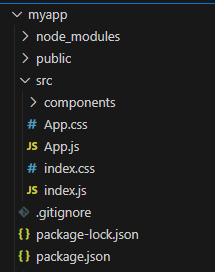
|
|
Gantt charts are used to visualize project schedules, timelines, and dependencies. In ReactJS, implementing a Gantt chart involves integrating libraries like dhtmlx-gantt or react-google-charts and structuring task data with start dates, durations, and progress indicators. PrerequisitesWe will explore these approaches to implement Gantt Chart in ReactJS: Table of Content Steps to Setup a React AppStep 1: Create a ReactJS application by using this command. npx create-react-app myappStep 2: Navigate to the project directory cd myappStep 3: Install the required packages using below command: npm install react-google-charts dhtmlx-ganttProject Structure: The updated dependencies in package.json file will look like: "dependencies": {
"@testing-library/jest-dom": "^5.17.0",
"@testing-library/react": "^13.4.0",
"@testing-library/user-event": "^13.5.0",
"dhtmlx-gantt": "^8.0.8",
"react": "^18.3.1",
"react-dom": "^18.3.1",
"react-google-charts": "^4.0.1",
"react-scripts": "5.0.1",
"web-vitals": "^2.1.4"
}Using react-google-chartsIn this approach, we are using the react-google-charts library to create a Gantt chart in ReactJS. The chart data is structured in an array format, including task details such as Task ID, Task Name, Start Date, End Date, Duration, Percent Complete, and Dependencies. Example: The below example uses react-google-charts to Implement Gantt Chart in ReactJS. Output:  Using dhtmlx-ganttIn this approach, we are using the dhtmlx-gantt library to implement a Gantt chart in ReactJS. The useEffect hook initializes the Gantt chart using gantt.init(‘gantt_here’) and parses the data for tasks with specific details like start date, duration, and progress. Example: The below example uses dhtmlx-gantt to Implement Gantt Chart in ReactJS. Output:  using dhtx-gantt |
Reffered: https://www.geeksforgeeks.org
| JavaScript |
Type: | Geek |
Category: | Coding |
Sub Category: | Tutorial |
Uploaded by: | Admin |
Views: | 15 |